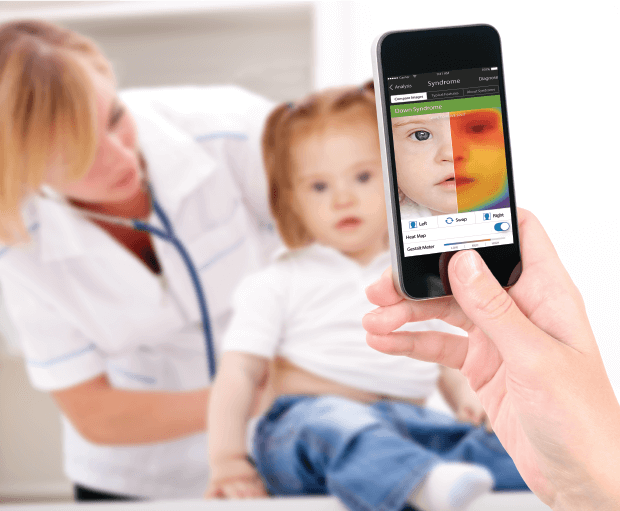Schwangerschaft nach a Genetische Diagnostik
Wie planen wir eine weitere Schwangerschaft, wenn wir ein Kind mit einer genetischen Erkrankung haben?
Bei der Planung einer Schwangerschaft nach der Diagnose ist es entscheidend, die Ursache der genetischen Erkrankung Ihres ersten Kindes vollständig zu verstehen. War ihr Zustand das Ergebnis einer de novo Genmutation oder ist es ein erblicher Zustand? Wenn es sich um eine Erbkrankheit handelt, wie wurde sie autosomal-rezessiv oder dominant vererbt?
Das Verstehen und Beantworten dieser Fragen wird bestimmen, wie Sie eine zweite oder zukünftige Schwangerschaft angehen, nachdem bei einem Kind eine genetische Erkrankung diagnostiziert wurde. Und wichtig für die Planung Ihrer pränatalen und möglichen postnatalen Gentests.
Der genetische Zustand meines Kindes ist das Ergebnis einer De-novo-Mutation
A de novo mutation in a gene usually occurs at some stage of the reproductive process and can neither be predicted nor prevented. It may only be diagnosed either by standard prenatal screening tests, which may indicate a problem, and then with more advanced testing, including amniocentesis or sampling from the placenta, or with newer screening tests from the Mother’s blood. De novo mutations may be responsible for many rare genetic conditions, but they are themselves rare and impossible to predict in future pregnancies. There is a minimal chance of having a mutation in germ cells (sperm or oocyte), so it is always a good idea to check with a genetic counselor.
Der genetische Zustand meines Kindes ist das Ergebnis einer autosomal rezessiven Erbkrankheit
In this case, both parents will be carriers of the mutated gene responsible for causing the disorder, but as they only both carry one copy of this gene, they will not show any symptoms of the syndrome. The chances of them having a child with a genetic condition relating to their mutated genes is 25%. If your child has a genetic condition inherited in an autosomal recessive pattern, you and your partner would require Gentest to confirm this is the case. The next step would be genetic counseling to determine the risk of another child being born with the same condition. This would include checking with a genetic counselor to determine which test would be the most suitable to assure a healthy future or next pregnancy.
Examples of syndromes inherited in an autosomal recessive pattern include Apert syndrome and Tay-Sachs syndrome.
Der genetische Zustand meines Kindes wird autosomal-dominant vererbt
In this case, just one parent is the carrier of the mutated gene. One copy of the mutated gene is enough to cause a syndrome inherited in an autosomal dominant pattern. The chances of having another child with the same syndrome are 50%. If your child has a genetic condition inherited in an autosomal dominant pattern, you and your partner would require genetic testing to confirm this is the case. The next step would be Genetische Beratung to determine the risk of another child being born with the same condition.
Examples of syndromes inherited in an autosomal dominant pattern include Marfan syndrome and Treacher-Collins syndrome.
Mein Kind hat eine X-chromosomale genetische Erkrankung
Dies bedeutet, dass sich das Gen mit Mutationen auf einem X-verknüpften Chromosom befindet. Frauen haben zwei x-Chromosomen und Männer haben nur ein und ein Chromosom. Dies bedeutet, dass x-chromosomale genetische Syndromes im Allgemeinen nur Männer betreffen oder sie stärker betreffen, da eine Kopie des mutierten Gens auf dem x-Chromosom ausreicht, um das Syndrom auszulösen. Andererseits würden Frauen mit zwei x-Chromosomen Kopien des mutierten Gens auf beiden benötigen, um das gleiche Syndrom zu verursachen.
Eine weibliche Trägerin hat eine Wahrscheinlichkeit von 50 %, das mutierte Gen an ihre Söhne weiterzugeben, was bedeuten würde, dass sie von der syndrom. Sie hat auch eine Chance von 50%, das mutierte Gen an ihre Töchter weiterzugeben, die Trägerinnen werden.
Ein männlicher Träger hat eine 100% ige Chance, das mutierte Gen an seine Töchter weiterzugeben, wodurch sie alle Träger werden. Er hat eine 0% ige Chance, das mutierte Gen an seine Söhne weiterzugeben, da Männer ihr Y-Chromosom an ihre Söhne weitergeben.
Examples of x-linked genetic syndromes include Fragile X syndrome and Fabry syndrome.
Welche Gentestoptionen stehen zur Verfügung, wenn wir ein weiteres Kind haben möchten?
1 - Genetisches Screening / Testen der Eltern
2 - Screening vor der Implantation, IVF
3 - Standard-Gentests vor der Geburt
4 - Fortgeschrittenere Test-Amniozentese, NIPT
5 - Genetische Analyse und Prüfung des einmal geborenen Kindes
Bevor Sie ein weiteres Kind planen, muss sich Ihre Familie einer genetischen Beratung unterziehen, bevor Sie mit vorgeburtlichen Gentests beginnen, um die damit verbundenen Risiken vollständig zu verstehen und Ihnen bei der Planung einer gesunden Schwangerschaft zu helfen.








